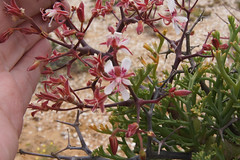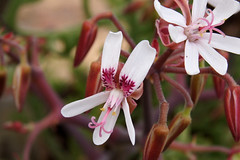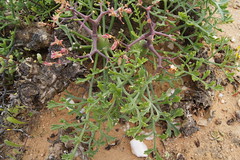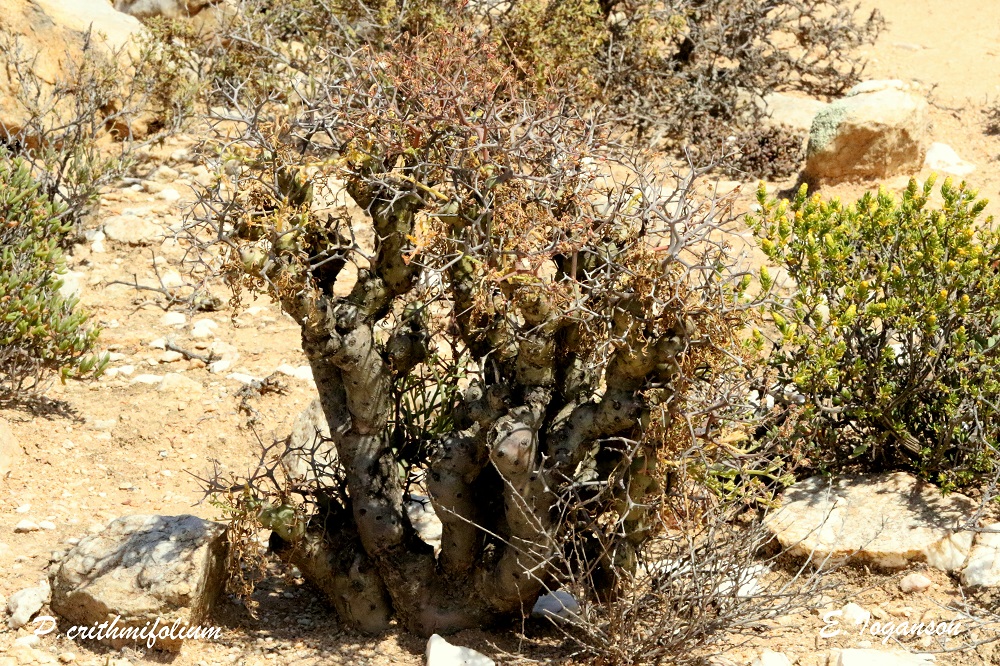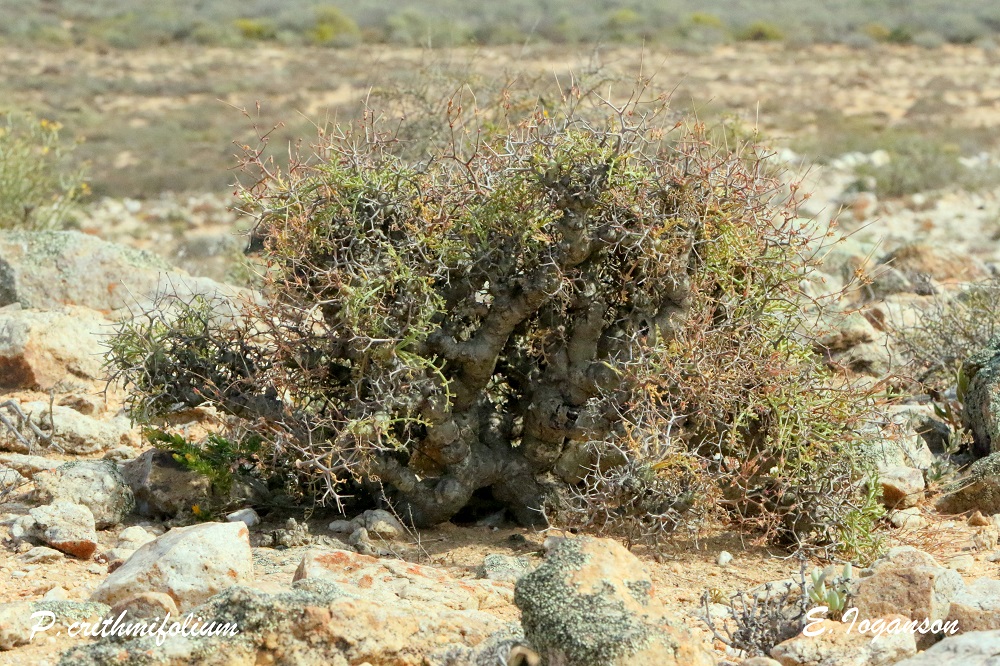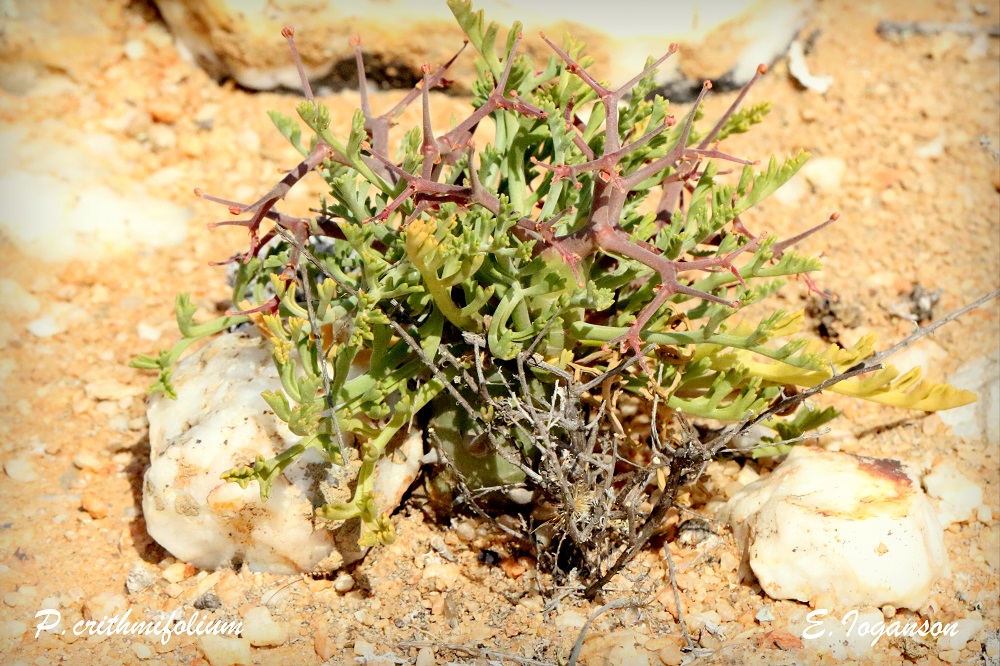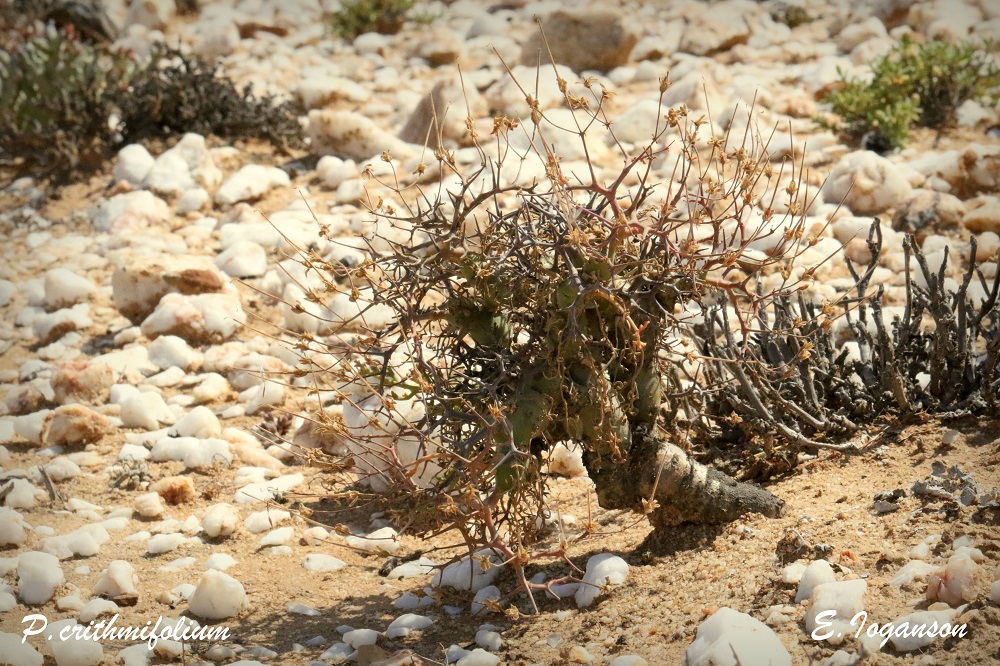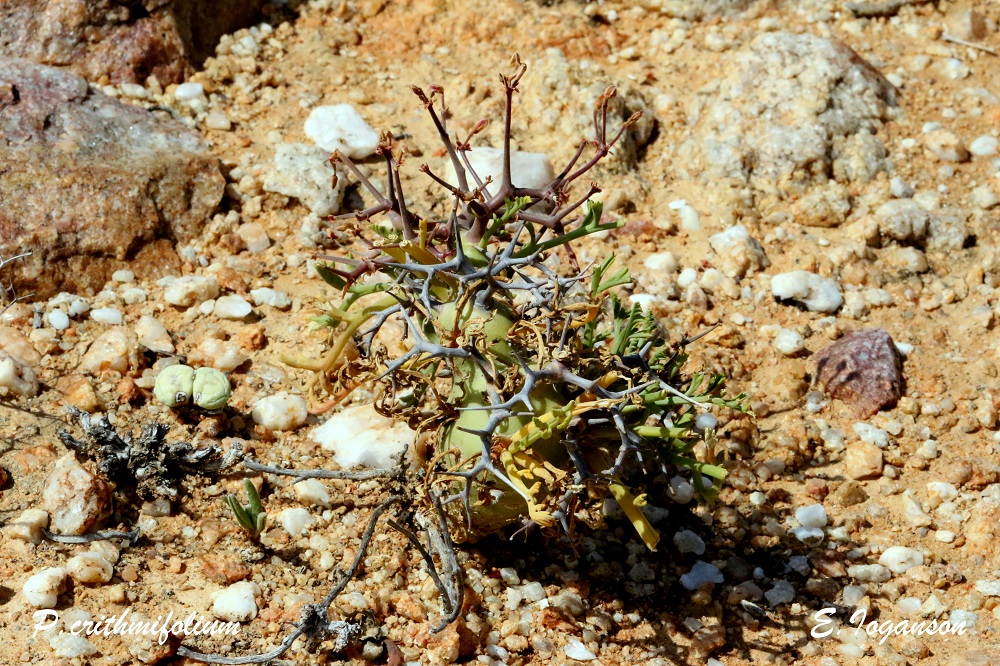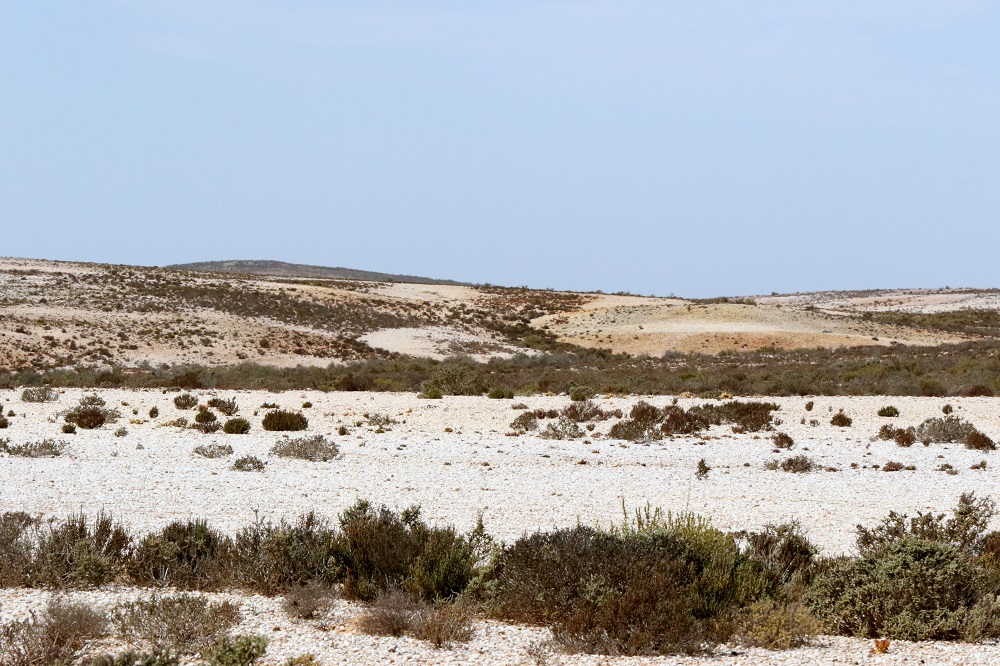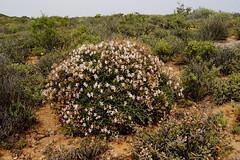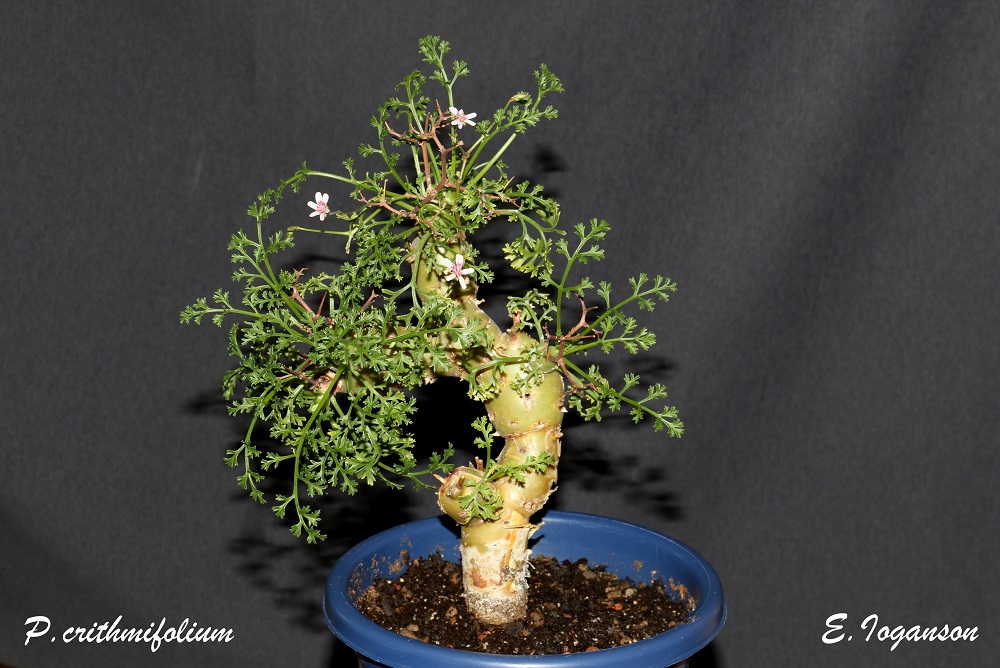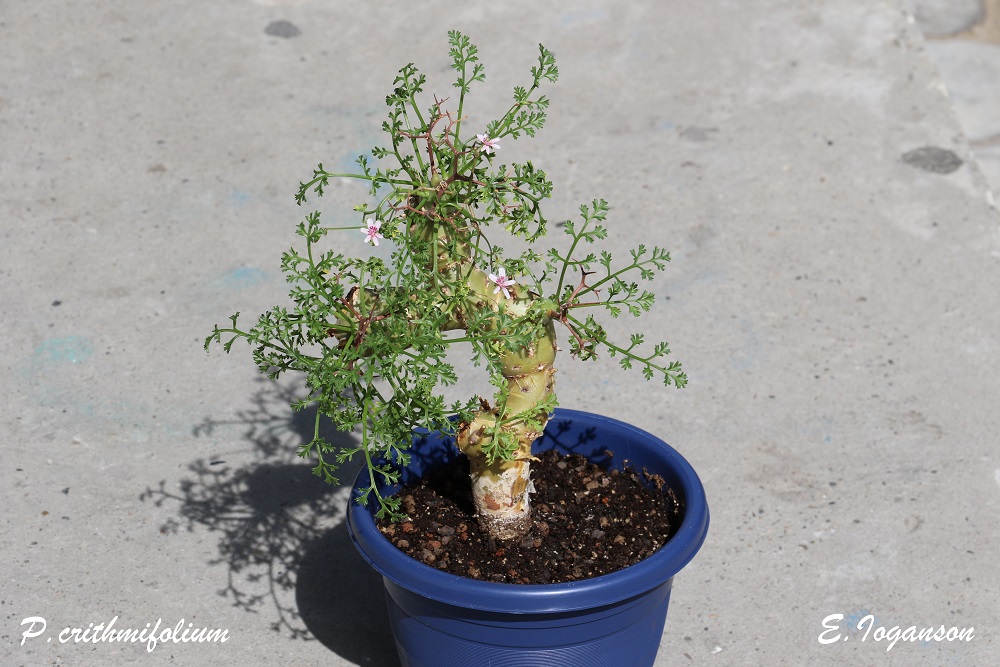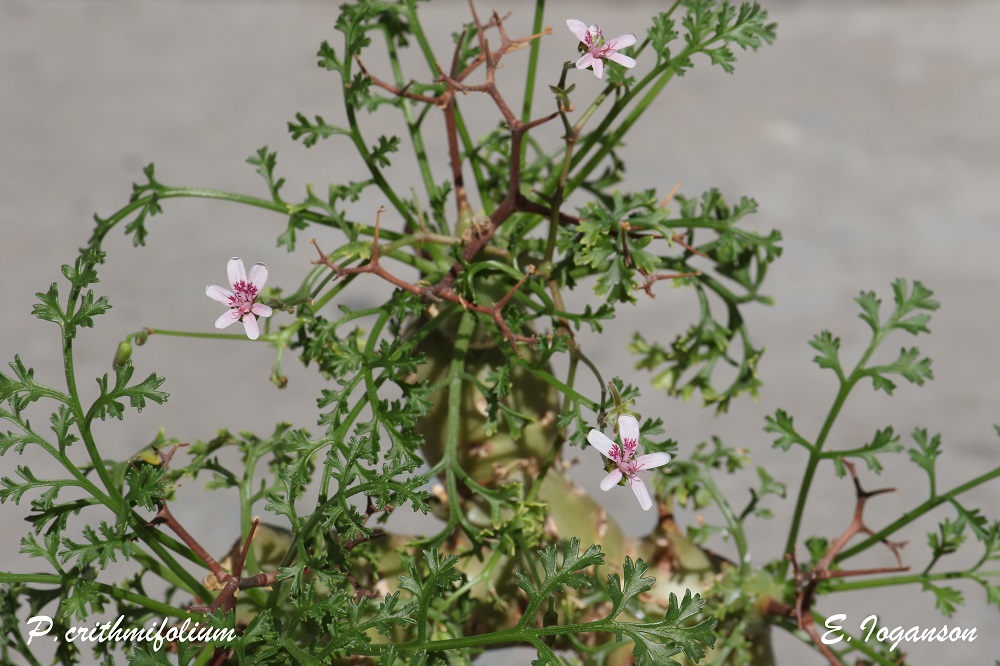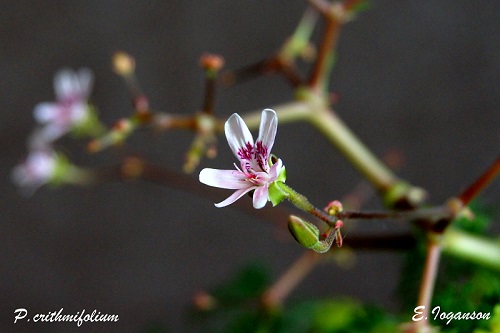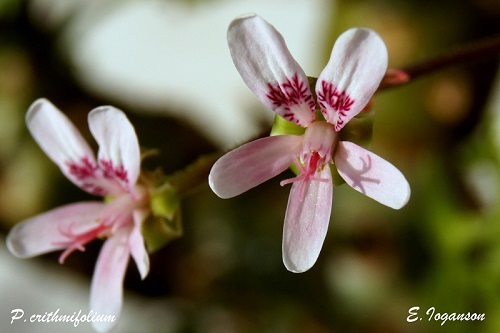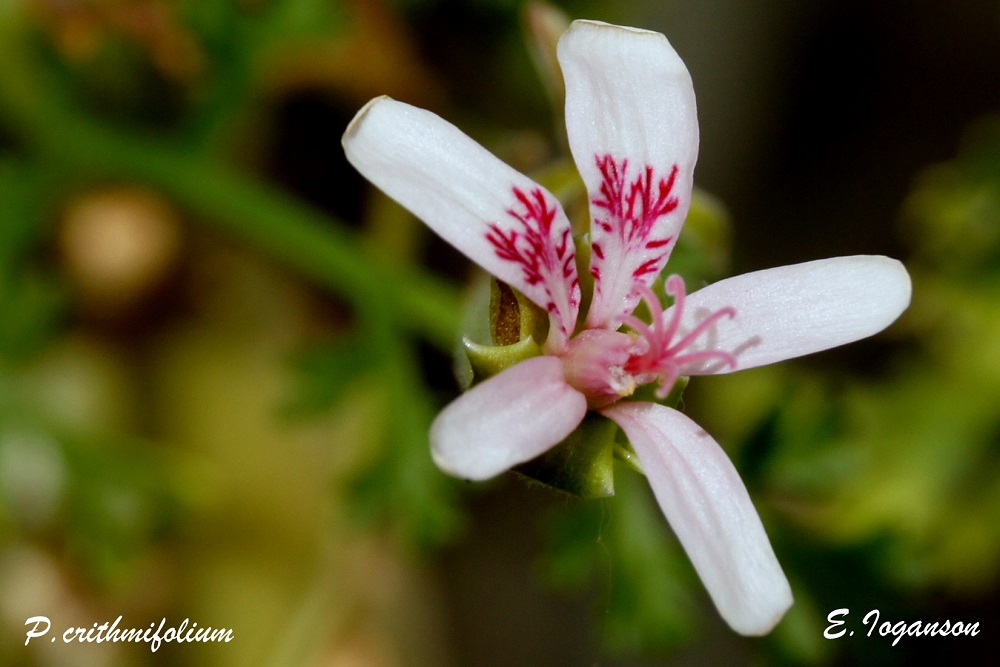P. crithmifolium
РусскийPelargonium crithmifolium J.E. Smith (Icon. Pict. Pl. Rar.,1: t. 13, 1793)
genus: Pelargonium L'Héritier
subgenus: Pelargonium L'Héritier
section: Otidia (Lindley ex Sweet) de Candolle
chromosome number 2n = 44
Crithmum is the generic name of Samphire, - folium (leaf in Latin), i.e. the leaves resemble those of Samphire, hence the specific epithet crithmifolium.
A succulent and branched shrublet attaining a hight of 0.8 m, though usually much smaller. The thick, fleshy and knobby stems have a green or yellowish-green color and a smooth or peeing back. The fleshy and smooth leaves are usually crowded on the upper part of the branches. They are pinnately divided into smaller leaflets, 5-12 cm long and 2-8 cm broad. The narrow lobes of the leaves have a dilated, irregularly toothed apex and a sloghtly pubescent margin. Leaf blades are borne on relatively long petioles which are chanelled on the upper side. The stipules are small, ovate and membranous.
Large and very much branched, panicled inflorescences are borne on the top of the branches. These inflorescences become hard and thorny with age and they are persistent for at least one year. Several pseudoumbels, each with 4-6 flowers are on each inflorescence. The color of the flowers is usually white (sometimes can see whitish-pink) with red markings near the bases of upper two petals. The upper petals are slightly larger than the lower three. Fertile stamens 5, their length varies, they are small in size and contain little pollen, which makes it difficult to self-pollination and, most likely, this is explaining the poor fruit formation in the culture.
Flowering time is anywhere from May to October.
Many autors such as Knuth (1912) considered P.paniculatum as a synonym of P. crithmifolium. However P. paniculatum has an unbranched stem and a non-persistent inflorescences.
Distribution and habitat
Pelargonium crithmifolium occurs in southern Namibia, the Richtersveld and Namaqualand. It favours hot, dry, rocky habitats. Like so many of these plants from the dry western parts of South Africa, they survive in winter rainfall areas that receive little more than 80 mm per annum. Besides they are relatively frost tolerant, being able to survive temperatures a little below 0°C.
When P. crithmifolium did not flower, its habitus is very similar to P. carnosum, but the first has the old flower stalks in the form of hard brown spiny shoots, which were mentioned above, and P. carnosum has not them.
Pelargonium crithmifolium was cultivated in England as early as 1792.
P. crithmifolium in flowering. Early September. Knersvlakte, Namaqualand, RSA. Photos by E. Ioganson

Adults and young plants P. crithmifolium at the beginning of a dormant period.
November, Knersvlakte, Namaqualand, RSA. Photos by E. Ioganson

Adult flowering shrubs P. crithmifolium, their widths up to 1.5 m.
Next to Springbok, Northern Cape, South Africa. Photos by E. Ioganson

Pelargonium crithmifolium. Plant and photos E. Ioganson


References
- Röschenbleck, J., Albers, F., Müller, M., Weinl, S. & Kudla, J. 2014. Phylogenetics, character evolution and a subgeneric revision of the genus Pelargonium (Geraniaceae). Phytotaxa 159 (2): 31–76.
- Van der Walt, J.J. 1977. Pelargoniums of southern Africa, vol. 1. Purnell, Cape Town.


























